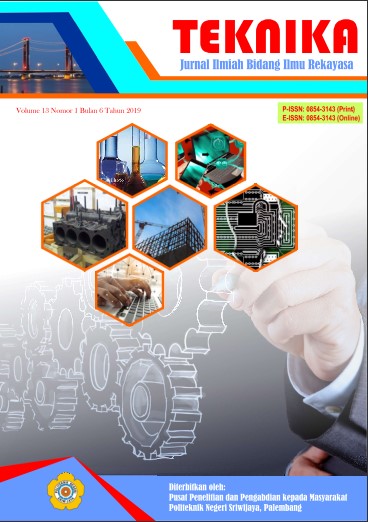KawalPilkada: A Conceptual Secure ElectronicVote System Based Blockchain Technology
DOI:
https://doi.org/10.5281/zenodo.13346338Keywords:
blockchain, e-voting, electronic voting, internet votingAbstract
 Today, elections are one of the foremost important means of sustaining democracies. thanks to the opportunities brought by technology, the need of creating the elections within the physical environment is decreasing every day. Instead, the difficulty of creating elections within the electronic environment is becoming more and more popular. With the emergence of Blockchain technology, the safety of the elections within the electronic environment has also been ensured to an excellent extent. On the opposite hand, moving the election system to the electronic environment will eliminate the physical costs, make sure the election security within the authoritarian regimes by eliminating the central authority through blockchain, and increase the participation rates within the elections because people can vote from anywhere with internet access. one of the foremost important elements within the blockchain-based electoral system is that the connection between the voter and therefore the vote, in other words, user privacy. during this article, we might wish to introduce an idea of blockchain- based voting systemsDownloads
Download data is not yet available.
References
REFERENCES
[1] Ramdhani, J. (2017). Bawaslu Temukan Pelanggaran Pemilih Gunakan Formulir C6 dan A5 Palsu. Disitas pada tanggal 29 Juni 2018. dari: https://news.detik.com/berita/d-3425720/bawaslu-emukanpelanggaran-pemilih-gunakanformulir-c6-dan-a5-palsu
[2] Andayani, D. (2018). KPU: 9 Daerah Lakukan Pemungutan Suara Ulang. Disitasi pada tanggal 29 Juni 2018. dari: https://m.detik.com/news/berita/408 8159/_kpu-9-daerah- lakukanpemungutan-suara-ulang.
[3] Schneier, Bruce. 1996. Applied Cryptography, Second Edition: Protocols, Algorithms, and
[4] Source Code . C. John Wiley & Sons, Inc.
[5] Murphy, P. J. (2001). Voting and elections. Capstone.
[6] Jones, D. W. (2007). Voting and elections. Computer, 16, 18.
[7] Kersting, N., & Baldersheim, H. (2004). Electronic Voting and Democracy. Palgrave Macmillan UK.
[8] Slaton, C. D. (1992). Televote : expanding citizen participation in the quantum age / Christa Daryl Slaton. New York: Praeger.
[9] Coleman, S., & Blumler, J. G. (2001, March). Realizing Democracy Online: A Civic Commons in Cyberspace. Citizens Online Research Publication No.2. Institute for Public Policy Research.
[10] Kohno, T., Stubblefield, A., Rubin, A. D., & Wallach, D. S. (2004). Analysis of an electronic voting system. IEEE Symposium on Security and Privacy, 2004. Proceedings. 2004, 27-40.
[11] Nakamoto, S. (2008). Bitcoin: A Peer-to-Peer Electronic Cash System. https://bitcoin.org/bitcoin.pdf adresinden alındı
[12] Gandhi, S. A., Gawde, M. N., & Shahid, H. M. (2018). ‘Blockchaining’ Democracy. Asian Journal of Convergence in Technology, Volume 4, Issue 1, 1-2.
[13] Yang, Z., Zhong, S., & Wright, R. N. (2005). Anonymity-Preserving Data Collection. Proceddings of the 11th ACM SIGKDD International Conference on Knowledge Discovery and Data mining, (s. 1-10). Piscataw, NJ.
[13] Magkos, E., Kotzanikolau, P., & Douligeris, C. (2007). Towards secure online elections: Models, primitives and open issues. Electronic Government an International Journal 4(3), 249-268.
[14] Quisquarter, J. J., Louis, G., Annick, M., & Berson, T. (1990). How to Explain Zero-Knowledge Protocols to Your Children. Advances in Cryptology.
[15] Becker, M., Chandler, L., Hayes, P., Hedrick, W., Jensen, K., Kandikattu, S., . . . Zweben, N. (2018). Proof of Vote®: An end-to-end digital voting protocol using distributed ledger technology (blockchain). Cleveland, OH, USA: Votem Corp.
[16] Ahmed Ben Ayed(2017);A Conceptual Secure Blockchain –Based Electronic Voting System; International Journal of Network Security & Its Applications (IJNSA) Vol.9, No.3, [10] Borglet, C, 2003,Finding Asscociation Rules with Apriori Algorithm,http://www.fuzzy.cs.uniagdeburgde/~borglet/apriori.pdf, diakses tgl 23 Februari 2007.
[1] Ramdhani, J. (2017). Bawaslu Temukan Pelanggaran Pemilih Gunakan Formulir C6 dan A5 Palsu. Disitas pada tanggal 29 Juni 2018. dari: https://news.detik.com/berita/d-3425720/bawaslu-emukanpelanggaran-pemilih-gunakanformulir-c6-dan-a5-palsu
[2] Andayani, D. (2018). KPU: 9 Daerah Lakukan Pemungutan Suara Ulang. Disitasi pada tanggal 29 Juni 2018. dari: https://m.detik.com/news/berita/408 8159/_kpu-9-daerah- lakukanpemungutan-suara-ulang.
[3] Schneier, Bruce. 1996. Applied Cryptography, Second Edition: Protocols, Algorithms, and
[4] Source Code . C. John Wiley & Sons, Inc.
[5] Murphy, P. J. (2001). Voting and elections. Capstone.
[6] Jones, D. W. (2007). Voting and elections. Computer, 16, 18.
[7] Kersting, N., & Baldersheim, H. (2004). Electronic Voting and Democracy. Palgrave Macmillan UK.
[8] Slaton, C. D. (1992). Televote : expanding citizen participation in the quantum age / Christa Daryl Slaton. New York: Praeger.
[9] Coleman, S., & Blumler, J. G. (2001, March). Realizing Democracy Online: A Civic Commons in Cyberspace. Citizens Online Research Publication No.2. Institute for Public Policy Research.
[10] Kohno, T., Stubblefield, A., Rubin, A. D., & Wallach, D. S. (2004). Analysis of an electronic voting system. IEEE Symposium on Security and Privacy, 2004. Proceedings. 2004, 27-40.
[11] Nakamoto, S. (2008). Bitcoin: A Peer-to-Peer Electronic Cash System. https://bitcoin.org/bitcoin.pdf adresinden alındı
[12] Gandhi, S. A., Gawde, M. N., & Shahid, H. M. (2018). ‘Blockchaining’ Democracy. Asian Journal of Convergence in Technology, Volume 4, Issue 1, 1-2.
[13] Yang, Z., Zhong, S., & Wright, R. N. (2005). Anonymity-Preserving Data Collection. Proceddings of the 11th ACM SIGKDD International Conference on Knowledge Discovery and Data mining, (s. 1-10). Piscataw, NJ.
[13] Magkos, E., Kotzanikolau, P., & Douligeris, C. (2007). Towards secure online elections: Models, primitives and open issues. Electronic Government an International Journal 4(3), 249-268.
[14] Quisquarter, J. J., Louis, G., Annick, M., & Berson, T. (1990). How to Explain Zero-Knowledge Protocols to Your Children. Advances in Cryptology.
[15] Becker, M., Chandler, L., Hayes, P., Hedrick, W., Jensen, K., Kandikattu, S., . . . Zweben, N. (2018). Proof of Vote®: An end-to-end digital voting protocol using distributed ledger technology (blockchain). Cleveland, OH, USA: Votem Corp.
[16] Ahmed Ben Ayed(2017);A Conceptual Secure Blockchain –Based Electronic Voting System; International Journal of Network Security & Its Applications (IJNSA) Vol.9, No.3, [10] Borglet, C, 2003,Finding Asscociation Rules with Apriori Algorithm,http://www.fuzzy.cs.uniagdeburgde/~borglet/apriori.pdf, diakses tgl 23 Februari 2007.
Downloads
Published
2020-10-19
Issue
Section
Articles
License
Copyright (c) 2020 TEKNIKA

This work is licensed under a Creative Commons Attribution 4.0 International License.















